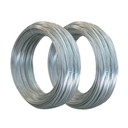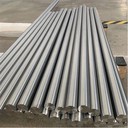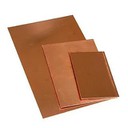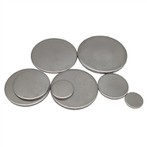Contact Us
- Xinwu District, Wuxi City, Jiangsu Province
- info@szdepu-metals.com
- +86 134 24179016

Welding Stainless Steel Sheet Metal
Welding stainless steel sheet metal is a widely used fabrication technique in various industries, ranging from automotive and aerospace to construction and food processing. Stainless steel sheet metal is known for its excellent corrosion resistance, strength, and aesthetic appeal, making it a popular choice for applications that require durability and a clean, professional finish.
Description
Welding stainless steel sheet metal is a common practice in many industries, including automotive, aerospace, and construction. It is essential to understand the proper techniques and procedures for welding this kind of sheet metal to ensure a strong and durable weld. In this article, we will discuss the different types of stainless steel, the welding process, and the equipment required to successfully weld stainless steel sheet metal.
Types of Stainless Steel
Stainless steel is a type of steel that contains at least 10.5% chromium. The chromium in the steel creates a protective oxide layer on the surface of the metal, which helps to prevent corrosion. There are several types of stainless steel, each with different properties and uses. The most common types of stainless steel used in sheet metal welding are:
►Austenitic Stainless Steel - This type of stainless steel is the most common and is used in a wide range of applications. It is non-magnetic and has good weldability, making it a popular choice for sheet metal welding.
►Ferritic Stainless Steel - This type of stainless steel is magnetic and has lower corrosion resistance than austenitic stainless steel. It is commonly used in automotive exhaust systems and other applications where corrosion resistance is not the primary concern.
►Martensitic Stainless Steel - This type of stainless steel is magnetic and has high strength and hardness. It is often used in cutlery, knives, and other tools.
Welding Process
The most common welding process used for welding stainless steel sheet metal is gas tungsten arc welding (GTAW), also known as tungsten inert gas (TIG) welding. GTAW is a high-quality welding process that produces clean and precise welds. It is also suitable for welding a wide range of materials, including stainless steel.
Before beginning the welding process, it is important to clean the surface of the stainless steel sheet metal thoroughly. Any dirt, grease, or other contaminants on the surface can lead to a weaker weld. After cleaning, the sheet metal should be clamped securely to prevent any movement during the welding process.
The TIG welding process involves using a tungsten electrode to create an arc between the electrode and the workpiece. A filler rod is then added to the arc to create the weld. The welding operator must control the heat input and travel speed to ensure a strong and uniform weld.




Equipment Required
To weld stainless steel sheet metal, several pieces of equipment are required, including:
●Tungsten Electrode - This is the electrode used in the GTAW process to create the arc between the electrode and the workpiece.
●Filler Rod - The filler rod is used to add material to the weld and create a strong joint between the two pieces of stainless steel sheet metal.
●Welding Torch - The welding torch is used to direct the heat from the arc to the workpiece.
●Gas Shielding - To protect the weld from oxidation and other contaminants, a gas shield is used during the welding process. Argon is commonly used as a shielding gas in TIG welding.
Examples
To provide an example of the welding process, let's assume we are welding two pieces of 304 stainless steel sheet metal together.
►First, we would clean the surface of the sheet metal thoroughly to remove any contaminants. Then, we would clamp the two pieces of sheet metal securely in place.
►Next, we would prepare the TIG welding equipment, including the tungsten electrode, filler rod, welding torch, and gas shielding. We would set the appropriate heat input and travel speed based on the thickness of the sheet metal and the desired weld strength.
►Once the equipment is prepared, we would begin the welding process, creating an arc between the tungsten electrode and the workpiece. We would then add the filler rod to the arc, creating a strong and uniform weld between the two pieces of sheet metal. Throughout the welding process, we would ensure that the heat input and travel speed are maintained to produce a high-quality weld.
►After the welding process is complete, we would allow the stainless steel sheet metal to cool down slowly to prevent any warping or distortion. Once the metal has cooled, we would inspect the weld for any defects or imperfections, such as cracks or porosity. If any defects are found, we would need to re-weld the affected areas to ensure a strong and durable weld.
In conclusion, welding stainless steel sheet metal is a common practice in many industries, and it is essential to understand the proper techniques and procedures to produce a strong and durable weld. The most common welding process used for welding stainless steel sheet metal is gas tungsten arc welding (GTAW), and it requires several pieces of equipment, including a tungsten electrode, filler rod, welding torch, and gas shielding. By following the proper procedures and using the appropriate equipment, we can produce high-quality welds that meet the stringent requirements of various industries.
Hot Tags: welding stainless steel sheet metal, China welding stainless steel sheet metal manufacturers, suppliers, factory
You Might Also Like











